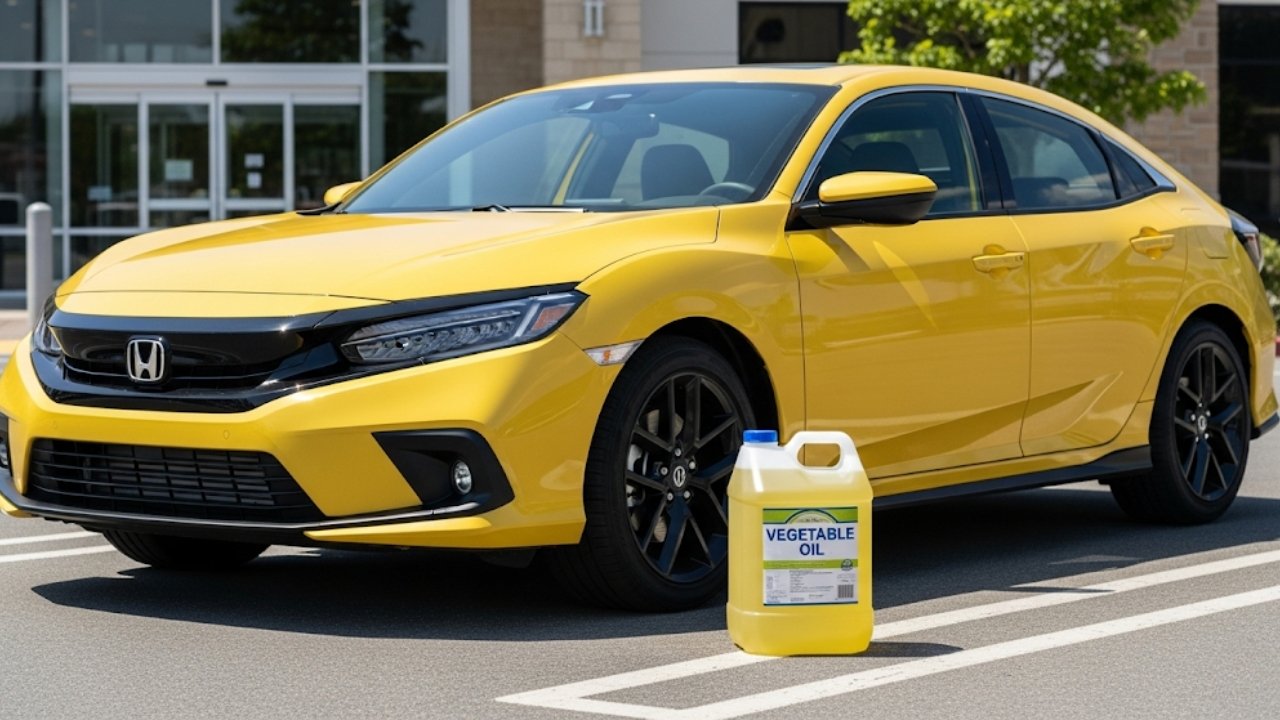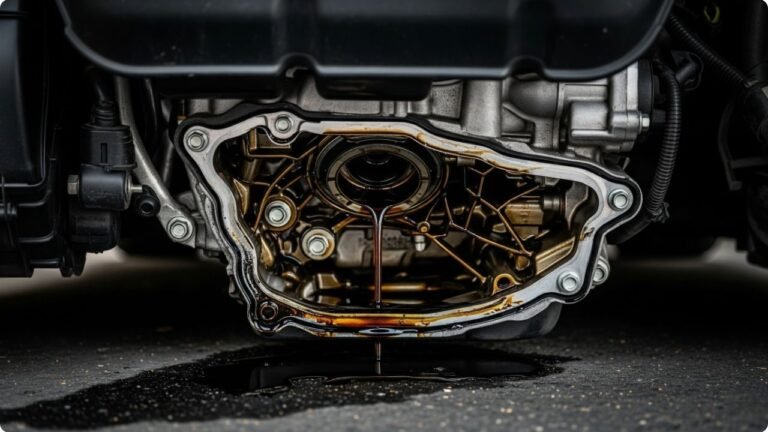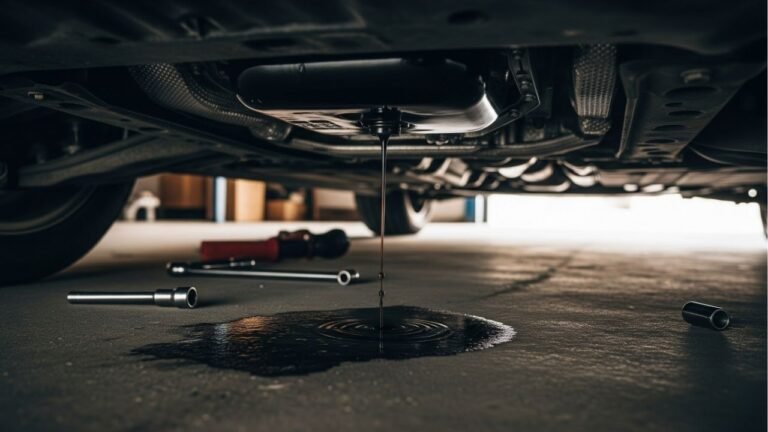Can You Run a Car on Vegetable Oil?

Have you ever stared at a bottle of cooking oil and wondered, “Can you run a car on vegetable oil?” You’re not alone. I had that thought once while deep-frying samosas on a lazy Saturday. The leftover oil looked so clean and golden that I jokingly said to my cousin, “Imagine if we could power the car with this stuff.” We laughed it off then—but the curiosity stuck with me.
So, I began to explore the idea. Could vegetable oil, something sitting in our kitchen, really power a car? Is it safe? Legal? Efficient? Or just a half-baked internet myth? What I discovered was far more fascinating than I imagined. Yes, you can run a car on vegetable oil—but there’s a catch (or several). It’s not as simple as pouring oil into your fuel tank. But it’s also not science fiction.
In this article, I’ll walk you through everything I learned—from real-world experiences to scientific facts. Whether you’re looking to save money, reduce your carbon footprint, or just impress your neighbors, we’ll explore if you can run a car on vegetable oil, and what it really takes.
What Kind of Cars Can Run on Vegetable Oil?

The golden rule? Your car must have a diesel engine—not a gasoline one. This is because diesel engines work through compression ignition. That means they ignite fuel through pressure and heat, not spark plugs. Vegetable oil, being thicker than regular diesel, needs that kind of combustion process to even stand a chance.
Here’s a quick table to clarify:
| Car Type | Can It Run on Vegetable Oil? | Notes |
|---|---|---|
| Diesel (pre-2006) | Yes, with modifications | Older models are simpler and more adaptable. |
| Diesel (post-2006) | Possibly, but risky | Stricter emissions systems complicate usage. |
| Gasoline | No | Will damage the engine immediately. |
| Electric/Hybrid | No | Completely different power systems. |
What Makes Older Diesels Better?
Older diesel engines (especially those before 2006) are often mechanically controlled and less sensitive to fuel quality. That makes them more forgiving when running on thicker substances like vegetable oil. Newer diesel cars have high-pressure common-rail systems that can clog or get damaged when using alternative fuels.
So, if you drive a 1990s Mercedes diesel, a Volkswagen TDI, or even an old-school Ford Powerstroke, you might be in luck. If your car was born after smartphones became mainstream, you’ll likely face more hurdles.
How Does Running on Vegetable Oil Work?
Here’s where things get interesting—and greasy. To run your car on vegetable oil, you can’t just pour it into the fuel tank and drive off. Well, you could, but you’d risk engine damage, clogs, or worse. Here’s how it actually works:
The Two Main Methods:
-
SVO Conversion (Straight Vegetable Oil)
-
Biodiesel Conversion
Let’s break these down:
1. SVO Conversion (Straight Vegetable Oil)
This means your car runs directly on filtered vegetable oil. But for this to work, your vehicle needs a conversion kit. This includes:
-
Heated fuel lines and tanks (to thin the oil)
-
Switchable dual-fuel system (start and stop with diesel)
-
Filter systems (to keep the oil clean)
You start the car on regular diesel. Once the engine warms up, you switch to vegetable oil. Before turning it off, you flush the system back with diesel to prevent clogging.
It’s kind of like using hot water to clean sticky syrup from a bottle.
2. Biodiesel
Biodiesel is not the same as vegetable oil. It’s made by chemically reacting vegetable oil with methanol and lye in a process called transesterification. This removes the glycerin from the oil, turning it into a fuel that can run in most diesel cars without modification.
So if you’re wondering, “Can I run my car on vegetable oil without converting it?”—the answer is no, but if you make or buy biodiesel, you can.
Is It Legal to Run a Car on Vegetable Oil?
This is where things get murky. In some places, it’s technically illegal to run your car on vegetable oil without paying fuel tax. Governments often classify vegetable oil as an alternative fuel, and using it may violate tax or emissions laws.
For example:
-
In the United States, the IRS requires you to pay road fuel tax if you use alternative fuels.
-
In the UK, you can use up to 2,500 liters per year without registering for duty.
-
In Bangladesh or South Asia, it’s largely unregulated, but that doesn’t mean it’s advisable without research.
Even though it feels innocent—like recycling—the law might not see it that way. So always check your local regulations before turning your car into a fryer-powered machine.
Pros and Cons of Running a Car on Vegetable Oil
Like everything else, using vegetable oil as fuel comes with its own flavor of pros and cons. Let’s walk through them honestly.
Advantages
-
✅ Environmentally Friendly
It’s renewable, biodegradable, and produces fewer harmful emissions than fossil fuels. -
✅ Cost-Effective (Sometimes)
If you can get used cooking oil for free from restaurants, your fuel costs drop dramatically. -
✅ Reduces Waste
Instead of dumping used cooking oil, you’re recycling it in a brilliant way. -
✅ Energy Independence
You’re less dependent on oil companies, especially during fuel crises.
⚠️ Disadvantages
-
❌ Thick and Sticky
Vegetable oil is more viscous than diesel, especially in cold weather. This can cause fuel lines and injectors to clog. -
❌ Requires Conversion Kit
These kits aren’t cheap and require some DIY skills or professional installation. -
❌ Inconsistent Quality
Used vegetable oil can vary in purity. You’ll need to filter it carefully to avoid engine issues. -
❌ Potentially Illegal
As discussed earlier, this method might not be road-legal in some areas without permits.
What Happens If You Use Cooking Oil Without Conversion?
I actually know someone who tried this—let’s call him “Rashid bhai.” One day he poured leftover sunflower oil into his old diesel van, thinking he’d save on fuel. The car ran—for about 20 minutes. Then the engine sputtered, coughed, and died. The repair cost more than what he saved.
Here’s what can happen:
-
Fuel injectors clog
-
Cold starts become impossible
-
Pistons and valves gunk up
-
Fuel pump strain increases
It’s a bit like trying to drink honey through a straw. Possible? Maybe. Practical or sustainable? Definitely not.
So, can you run a car on vegetable oil without any changes? Technically yes—for a short while. But in the long run, it’s a risky, sticky gamble.
What Type of Vegetable Oil Works Best?
Not all vegetable oils are created equal. Some are better suited for engine combustion than others.
Here are a few commonly used oils:
| Type of Oil | Suitability | Why? |
|---|---|---|
| Canola (Rapeseed) | Excellent | Low viscosity, high energy content |
| Soybean Oil | Good | Widely available, decent performance |
| Sunflower Oil | Moderate | Works but thicker; more filtering needed |
| Corn Oil | Fair | Prone to gumming; needs careful handling |
| Palm Oil | Poor | Very thick and waxy at cooler temperatures |
Best practice? Go with canola oil—especially filtered used oil from restaurants that deep-fry fries or nuggets. Just make sure you filter it properly and test it before large use.
How to Convert Your Car to Run on Vegetable Oil
If you’ve got an old diesel vehicle and the motivation to tinker, setting it up to run on vegetable oil is entirely doable. But it’s not something you can rush. Here’s how to do it the right way.
Step-by-Step Overview of the SVO Conversion Process
-
Choose the Right Vehicle
Go for a pre-2006 diesel engine, preferably something like a Mercedes 300D, VW Jetta TDI, or Ford F-250 with a Power Stroke diesel engine. -
Buy a Conversion Kit
These usually include:-
Heated fuel tank
-
Fuel line heaters
-
Fuel filter systems
-
Switching valve (to switch between diesel and vegetable oil)
Kits can range from $800 to $2,000 depending on your vehicle.
-
-
Install the Dual Fuel System
-
Start with regular diesel.
-
Once the engine reaches operating temperature, switch to vegetable oil.
-
Before turning off the engine, switch back to diesel to flush the system.
-
-
Filter Your Oil
Never pour oil straight from the fryer into your tank. You need to:-
Let it settle to remove water.
-
Use a multi-stage filter to catch food bits, fats, and gunk.
-
Heat the oil to make it thinner and easier to filter.
-
-
Monitor Engine Performance
Use temperature sensors and pressure gauges to ensure everything’s running smoothly. Regular maintenance is key.
Filtering Used Vegetable Oil: The Right Way
Getting used vegetable oil from restaurants might be free or cheap, but filtering it is non-negotiable. Here’s a simple guide:
Homemade Filtering Setup
-
Stage 1: Let the oil sit in a clear container for 24–48 hours. Water and solids settle at the bottom.
-
Stage 2: Use a coarse mesh filter (like a paint strainer) to remove large food particles.
-
Stage 3: Pass it through finer filters—down to 5 microns. Coffee filters won’t cut it.
-
Stage 4: Store it in airtight, water-free containers.
Pro tip: Never use oil that smells rancid or has been reused too many times. Your engine deserves clean, clear fuel.
Is It Worth It? The Cost Breakdown
You might be wondering—how much do I actually save by running my car on vegetable oil?
Here’s a rough estimate:
| Expense | Cost (USD) |
|---|---|
| Used Diesel Car | $2,000 – $6,000 |
| Conversion Kit | $800 – $2,000 |
| Installation (DIY or Shop) | $0 – $1,000 |
| Filtering Equipment | $100 – $300 |
| Cost of Used Oil | Often free to $1/gallon |
| Diesel Backup Fuel | $20 – $40/month |
| Maintenance Costs | $200 – $400/year |
Potential Savings
If you drive 15,000 miles a year and average 25 mpg, you’ll use about 600 gallons of fuel. At $4/gallon for diesel, that’s $2,400/year. With free or cheap oil, you could save up to $2,000/year after the first year’s setup cost.
But remember—this is a long-term project. It’s not just about money. It’s about independence, sustainability, and a little grease under your nails.
Real-Life Success Stories
I came across a retired schoolteacher named Linda in Oregon who’s been running her old diesel van on fryer oil from a local burger joint for 7 years. She filters it in her garage and says her fuel bill is “lower than her Netflix subscription.”
In Bangladesh, some rural mechanics have even started small vegetable oil fuel stations where filtered oil is sold at half the cost of diesel. Farmers with tractors and old Japanese microbuses are the main customers.
Then there’s Ravi, a college student in India, who fitted his 1998 Mahindra Jeep with a basic dual-tank system. He collects waste oil from his university cafeteria and says he hasn’t bought diesel in months.
These stories prove that yes, you can run a car on vegetable oil, and people actually do.
Environmental Impact: Is It Really Greener?
Now, let’s talk heart-to-heart. Is using vegetable oil actually better for the planet?
✅ The Good:
-
Lower CO₂ emissions than fossil fuels.
-
Biodegradable and non-toxic.
-
Reduces waste by recycling used cooking oil.
❌ The Concerns:
-
If not filtered well, it can emit soot.
-
Overuse of fresh vegetable oil (especially palm oil) can increase deforestation.
-
Fuel tax evasion may lead to legal complications.
The takeaway? It’s definitely greener when done right—especially if you’re using recycled oil, not fresh stock.
FAQs About Running Cars on Vegetable Oil
1. Can I use vegetable oil in any car?
No. Only diesel cars—and preferably older ones—can run on vegetable oil. Gasoline engines will break down.
2. Is it legal to use vegetable oil as fuel?
Depends on where you live. Some places require fuel tax or registration for alternative fuel use. Always check your local regulations.
3. What’s the difference between biodiesel and vegetable oil?
Biodiesel is chemically processed and can be used in diesel cars without modification. Vegetable oil needs engine conversion and careful filtering.
4. Can I use vegetable oil in winter?
Not easily. Vegetable oil thickens in the cold. You’ll need heated tanks and lines to keep it flowing.
5. How do I store used vegetable oil?
Keep it in sealed, dry containers away from sunlight. Always filter it before storing long-term.
6. What happens if I use dirty or unfiltered oil?
Expect clogged injectors, gunky pistons, and engine stalls. Always filter your oil properly.
7. Can I blend vegetable oil with diesel instead of converting the engine?
Yes, but only up to about 20% without issues. More than that risks clogging unless the engine is warm or converted.
8. Is it cheaper to use vegetable oil than diesel?
Yes, especially if you can get used oil for free. But don’t forget the upfront conversion costs and ongoing maintenance.
Final Thoughts: Should You Try It?
So, back to our original question—can you run a car on vegetable oil? Yes, absolutely. But should you?
If you’re a DIY enthusiast, environmentally conscious, or someone who just loves outsmarting the system, then this route can be both rewarding and practical. But if you’re expecting a plug-and-play solution or have a modern diesel engine, you might want to reconsider.
Here’s how I’d put it:
-
Do it for the love of sustainability, not just to save a few bucks.
-
Do it responsibly—with filtered oil, proper setups, and legal awareness.
-
Do it only if you’re willing to learn and maintain.
The idea might sound strange, even radical—but in a world where fuel prices are skyrocketing and emissions are choking cities, running your car on leftover French fry oil doesn’t seem so crazy anymore.






